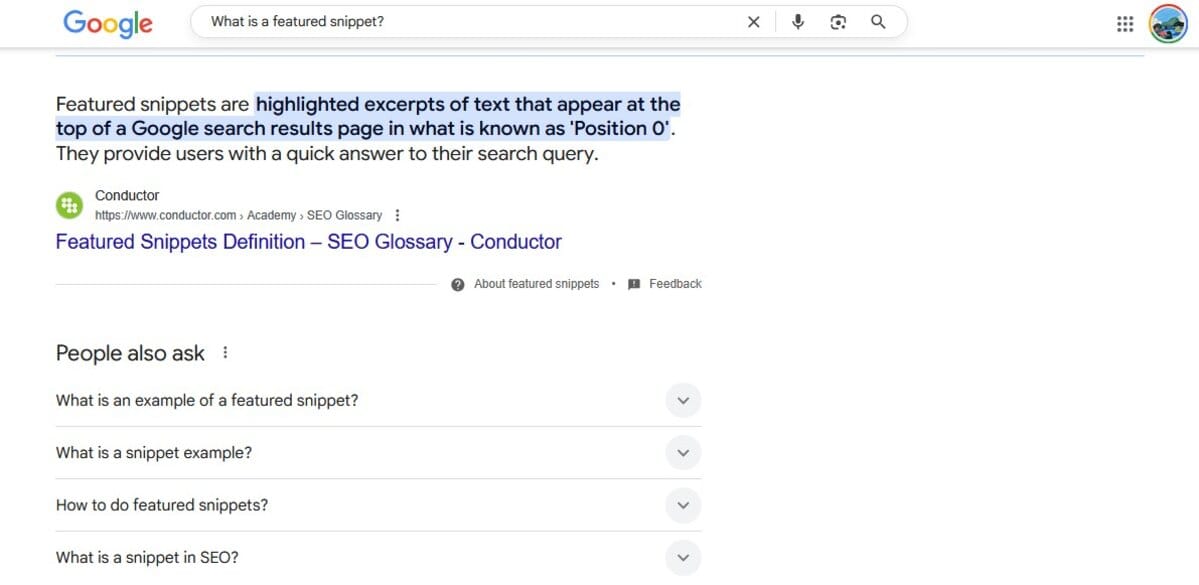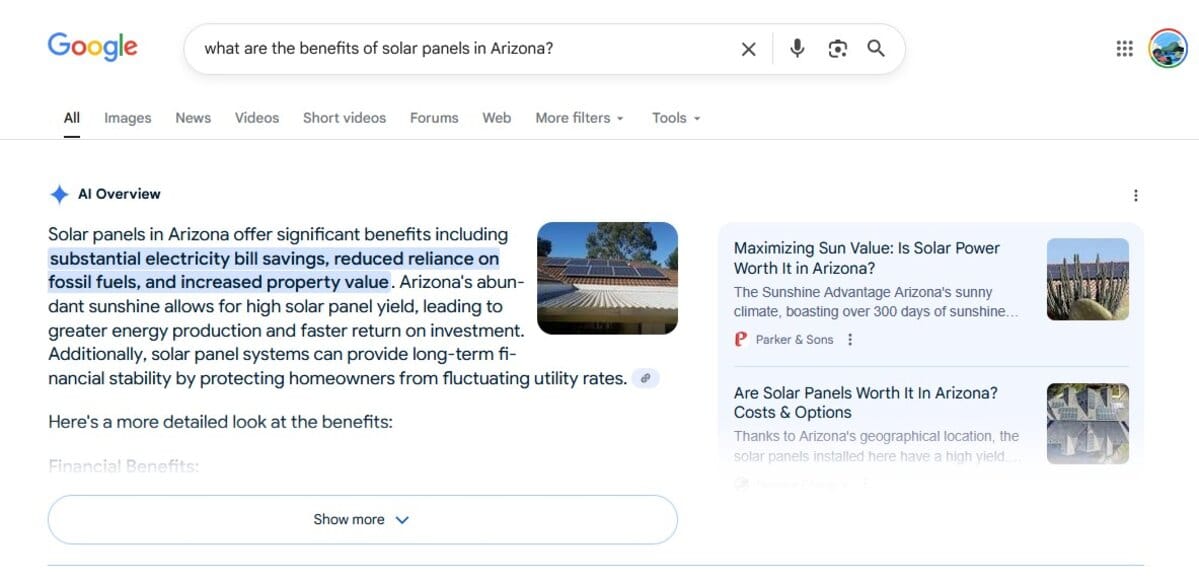If you’re in digital marketing—or frankly, just trying to get your content noticed—featured snippets are the holy grail of organic visibility.
In 2025, featured snippets aren’t just a prestige badge; they’re real estate on Google’s front page. Nail one, and you’re practically a billboard on the information highway, getting exposure (and potential customers) before your competitors even show up.
What Exactly Is a Featured Snippet?
A featured snippet is that neat answer box Google plucks from a webpage to sit above the standard search results. You’ve seen them: paragraph snippets for definitions, bulleted lists for how-tos, tables comparing specs, and even little video clips with timestamps. For instance:
Searching “What is a featured snippet?” yields a crisp definition up top.

Typing “how to tie a Windsor knot” often returns a numbered list or a YouTube tutorial.

They’re Google’s way of saying, “Here’s your answer—right now.”
Why Should You Care? The Impact Is Real
Let’s cut to the chase: snippets can seriously boost your traffic.
While the exact click-through rate (CTR) can vary widely depending on the query, featured snippets are a primary source of organic traffic. The widely cited 8% CTR statistic from Search Engine Land is a bit dated and often debated in the SEO community, but the core idea remains: a snippet can significantly increase a page’s visibility and organic clicks.
Many SEOs report that a featured snippet can act as a CTR amplifier, especially for transactional queries.
For example, a travel agency’s page that wins the snippet for “best places to stay in Paris” could see a substantial jump in bookings and leads.
It’s like going from a cozy storefront on a side street to prime corner space with neon lights.
Sure, some critics worry about “zero-click searches,” where users get the answer they need without scrolling. But here’s the thing: even then, you’re building brand awareness. Someone scratches their itch, spots your URL, and remembers it next time. That, to me, feels worth the effort.
The Mechanics Behind Google’s Choice
Google’s algorithms love content that directly answers a user’s question.
Long-tail, conversational queries—say, “what are the benefits of solar panels in Arizona?”—often trigger snippets.

Voice search trends, too, push more natural-language questions, and frankly, it’s where I see the biggest opportunity right now. If your content mirrors how people speak, you’re halfway there.
Strategies That Actually Work (Yes, We’ve Tried Them)
So here’s what we’re doing with our Outreach Bee clients—and seeing tangible results.
- Hunt for Existing Opportunities: We start by pulling all keywords where clients rank in positions two through five. Why? Because Google’s telling us, “Hey, I like this page, just not enough.” We then check which of those SERPs already display snippets. If you spot one, you know the format—paragraph, list, table—and you know it’s ripe for the taking.
- Question-First Headings: Instead of “Benefits of Yoga,” we write “What are the benefits of daily yoga practice?” Then, immediately below the H2, we deliver a concise, 40-to-60-word answer. This mirrors the snippet style and satisfies Google’s craving for directness.
- Structured Data Markup: We implement FAQ and HowTo schema. It feels a lot technical at first but once you’ve added the JSON-LD to a template, it’s almost autopilot. Clients love it when their Q&A sections suddenly pop in “People also ask” boxes, too.
- Lists and Tables—But Only When They Make Sense: Ever force a table and end up with nonsense? We’ve been there. Now, we carefully choose when to use tabular layouts—usually when comparing specs (e.g., “iPhone 16 vs. Galaxy S25 battery life”)—and we flesh out unordered or ordered lists only for clear, step-by-step guides.
- Periodic Refreshes: A snippet today might slip away tomorrow if your content feels stale. We revisit optimized pages every quarter—tweak wording, update stats, swap in new visuals. Clients often see snippet wins return within weeks of a refresh.
Beyond Text: Images, Video, and Voice
Don’t sleep on visual content. Optimized images with descriptive alt text sometimes appear alongside paragraph snippets. And if you have tutorial videos, drop in clear chapter markers—Google often surfaces the exact timestamp for a “how-to” query like “how to change a flat tire.”
Voice search? Our team crafts conversational FAQs like “Hey Google, what’s the best way to improve indoor air quality?” followed by an answer in the same tone. It’s a bit quirky, I’ll admit, but voice assistants eat it up.
Common Pitfalls (and How to Dodge Them)
Stuffing every question imaginable into one article? That rarely works. Better to laser-focus on a handful of high-impact queries.
Snippet-worthy content loses out if the page loads like molasses. We run Lighthouse audits and trim the bloat.
A 50-word answer without any intro or follow-up confuses Google. Always wrap your snippet answer in a broader narrative.
Tools of the Trade
While fancy enterprise suites claim to reveal snippet secrets, I often start with these free gems:
- Google Search Console: Check Performance → Search Results → “Position” to spot potential targets.
- Ahrefs, Semrush, or Ubersuggest: While not free, these platforms have dedicated features to show you which of your keywords already have a snippet, making it much easier to identify opportunities.
- Screaming Frog: To audit existing schema markup across your site.
Is It Worth the Effort?
I’ll be honest—earning featured snippets is equal parts art and science. There are no guarantees. But from a practical standpoint, even modest snippet gains translate into noticeable lifts in traffic, leads, and brand credibility. Heck, sometimes I’m downright surprised when a rewrite on a dusty old blog post lands a snippet win.
Wrapping Up
Featured snippets matter more than ever in today’s AI-infused search landscape. When Google’s answer boxes start leaning into AI overviews, it’s savvy to have your content prepped, structured, and marked up. That way, even if you don’t claim position zero every time, you’re feeding Google the exact morsels it needs to spotlight your expertise.
Ready to take the plunge? Start small—identify one page, tweak that question-answer section, add schema, refresh your visuals—and watch what happens. Then rinse and repeat.
What snippet strategies have you tried? Seen any surprising wins (or epic fails)? Drop a comment below, share your story, or let me know on Facebook, X (Twitter), or LinkedIn.
And if you found this guide helpful, give us a follow—we’ve got more nitty-gritty SEO insights heading your way.
Sources
- www.backlinko.com/hub/seo/featured-snippets
- www.semrush.com/blog/featured-snippets/
- www.ahrefs.com/blog/featured-snippets/



Understanding the Shift Towards Story-Driven Video Content in Digital Marketing
5 AI Shortcuts to Draft Your Q1 Content Outlines While You’re on Holiday